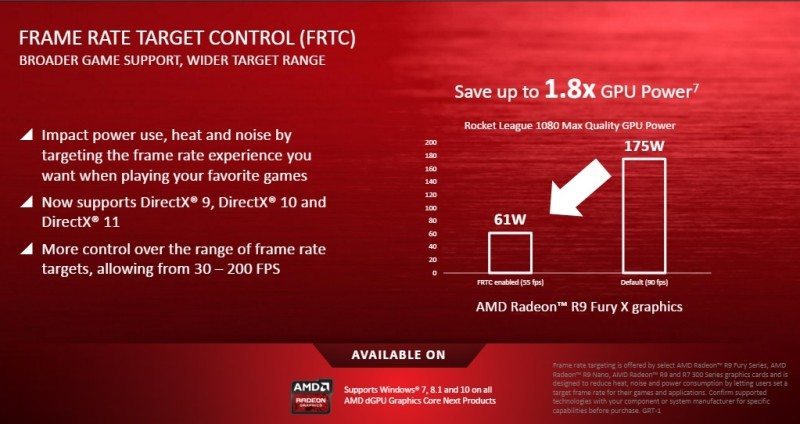AMD Radeon: Crimson Edition First Look
Rikki Wright / 9 years ago
What’s New?
What isn’t new I think that should say. The software backbone of Radeon Software has had a complete overhaul from the jumbled mess that was Catalyst Control Center. New features were just added to a drop down/ expansion menu on the left and sort of got lost if you didn’t know what you was looking for. One thing I did like was the search bar which has helped me find a specific feature many of times. Unless you had a lot of time on your hands or knew the software, finding what you needed might have taken a while.

The main page of Radeon Settings is clean and crisp with a much more intuitive menu system. One thing that I don’t quite like is the AMD social media buttons along the bottom, maybe having “Follow AMD” as another bottom menu with each social media outlet as a larger image would have been a less glaring option.

Before getting into too much Graphical User Interface (GUI) detail, let’s have a quick look at what makes Radeon Settings different. The teams behind this software focused on four (4) main pillars that would make a great software, but all of that needs to be underpinned with stability. There is no point having a fantastic GUI if the system crashes every time you try to open it. I’m glad that this has been depicted like this, it shows that the thought goes into each pillar equally and each is as important as the other.
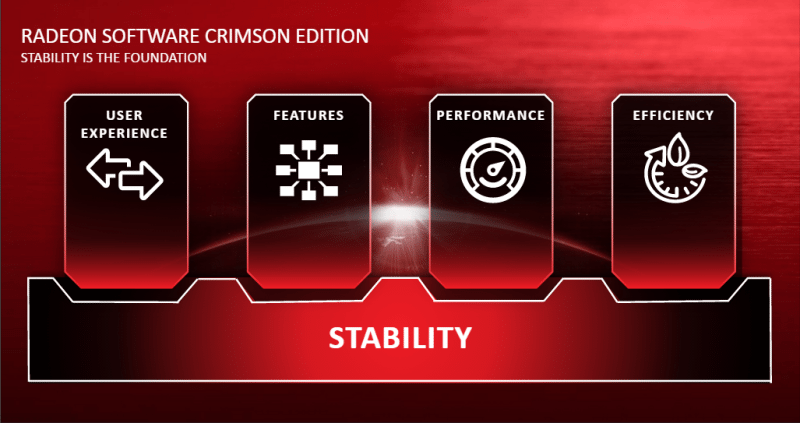
To get the maximum system stability across a huge variety of systems, the team tested the software harder and in different ways. This meant the introduction of more systems which boosted the autonomous testing by 100%, manual testing was up 25%, the software was installed and used on 15% as many system configurations and more importantly tested on the latest technology such as 4K and Virtual Reality (VR).
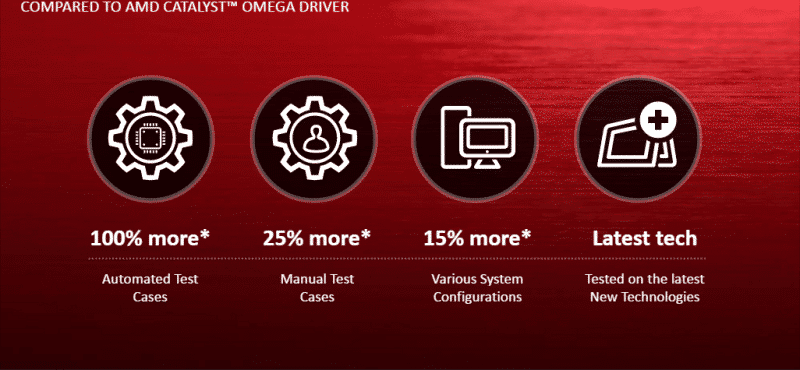
With those additional testing procedures, customer reports of bugs and issues were also fixed. The chart lists the top 10 most reported bugs, but we are assured that almost every issue that has been reported have been fixed.
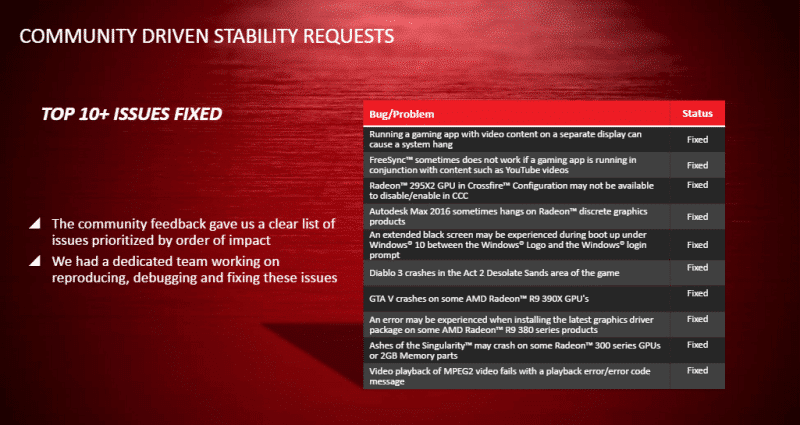
Looking into the four pillars themselves, we have the cores that should make (or break) a great software application. First up is User Experience. Throughout the media calls and all of the documents, a huge drive has been behind how quickly they want Radeon Settings to start up. Reportedly CCC took a whopping 13-14 seconds to open where Radeon Settings can open up in well under a quarter of that, yes under 3 seconds in testing. The features of Radeon Settings are completely new with nothing revamped to save costs.

Another side effect of this is an increase to initialisations of displays (from the time you plug in a monitor on an active computer to the time it displays the image). Something that would only really impact those who regularly connect displays on the fly such as those giving presentations.
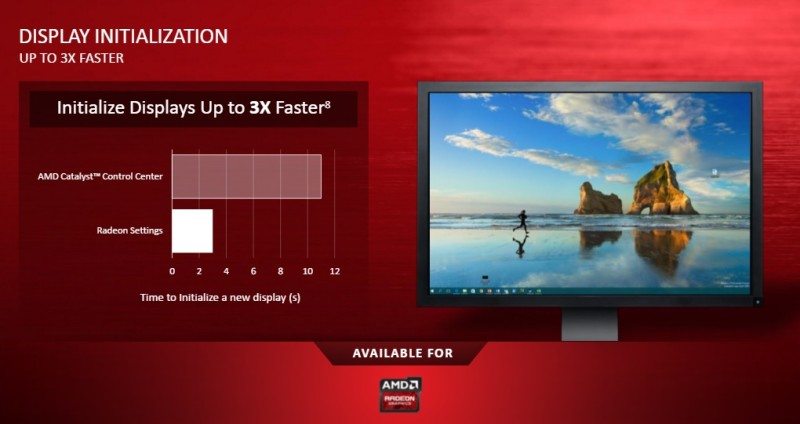
One thing that always niggles me and many users is after uninstalling CCC, you would likely need to install a driver sweeper/ cleaner to get all of the hidden parts of the software for that “just in case” you install it again. Not with this, you click uninstall and that’s what it does.

Most of the features we already know about such as AMD FreeSync and Frame Rate Target Control (FRTC), but these were only available on DX11 software or even limited to GCN only graphics cards. Radeon Settings has opened the door to everyone and these and many more features now work with more hardware and more software. FRTC for example, was limited to DX11, but this new update has opened the door to DX9 and I have an example to show this off later.
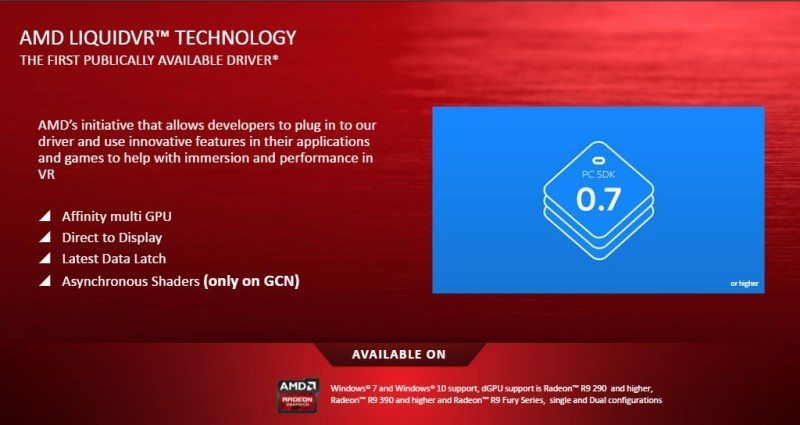
A GCN exclusive feature is Asynchronous Shaders, a perfect AMD solution to VR which aims to lower the latency between the input and output. The example given is the time that you move your head with a VR headset to the time the movement takes to display on the headset, hopefully reducing nausea.
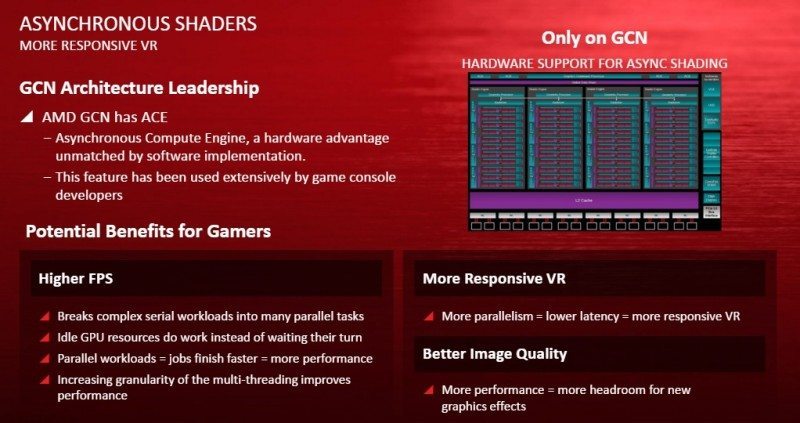
Pretty much old news about FreeSync, but new Crossfire is supported by DX9 games and also FreeSync is now available to work over HDMI with this enablement driver.
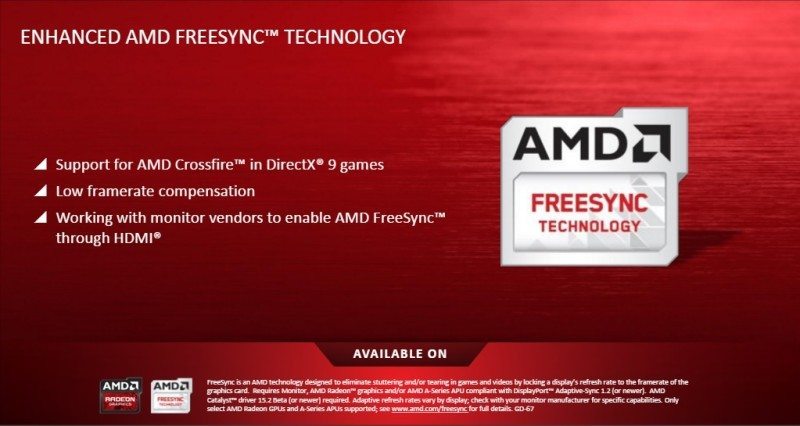
FreeSync has been given an update with Low Framerate Compensation (LFC), where your FPS drops below the monitor refresh rate a process kicks in to duplicate frames. I am currently waiting on a response from AMD for this as I believe this will induce stuttering when the duplicate frame is displayed.
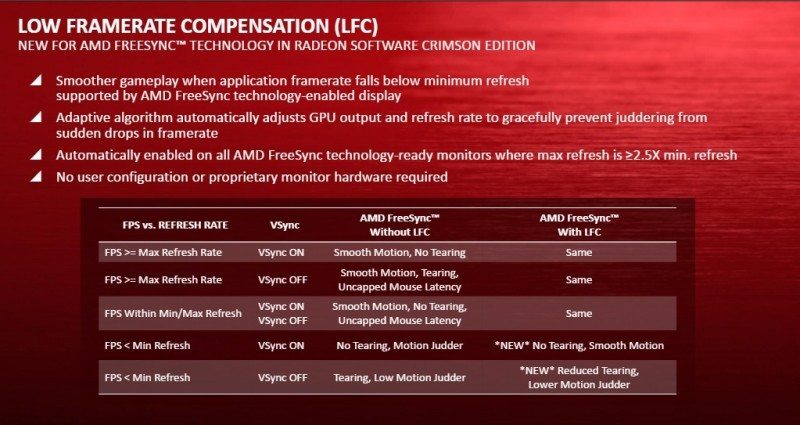
A huge community backed feature is customer resolutions. You can now create your own custom resolution with a huge amount of settings. This is something that will likely not impact most general users, but this is something that will likely interest those with uncommon displays such as 21:9 ultra widescreen monitors.
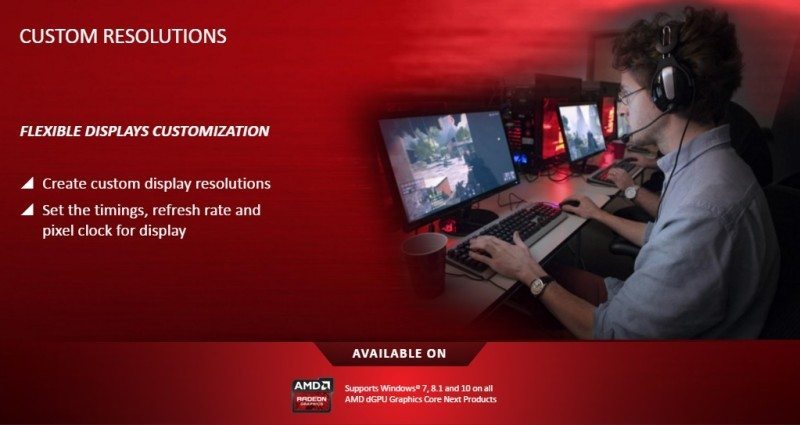
Third is Performance, something that NVIDIA users tend to throw at AMD users. However, we have noticed a steady increase in performance thanks to better-optimised drivers and Radeon Settings looks to add onto this with up to an additional 20% of in-game performance compared to the latest CCC WHQL driver, 15.7.1. This enhancement isn’t across every game and will likely only be noticed in newer titles that there is still development for such as Star Wars Battlefront.
We get a look at game loading time first, traditionally you get a very small hang in some games when using CCC 15.7.1, but with Radeon Software, this hang almost eliminated and reduces load times up to 33%.
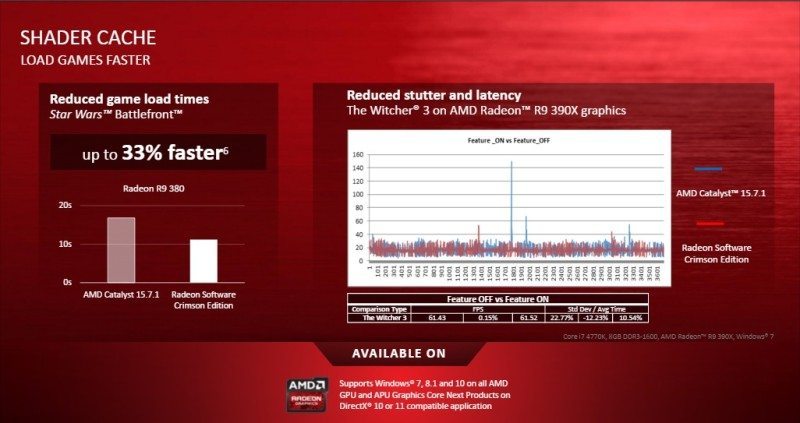
Better optimised drivers along with DX12 means better performance. Not always the case, but in newer DX12 titles you could see up to 20% better performance.
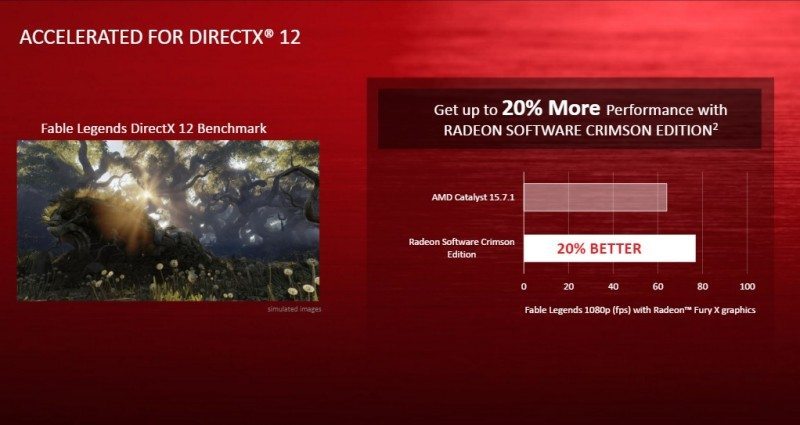
Using some of the newer titles, you can see a performance boost of around 107% on average.
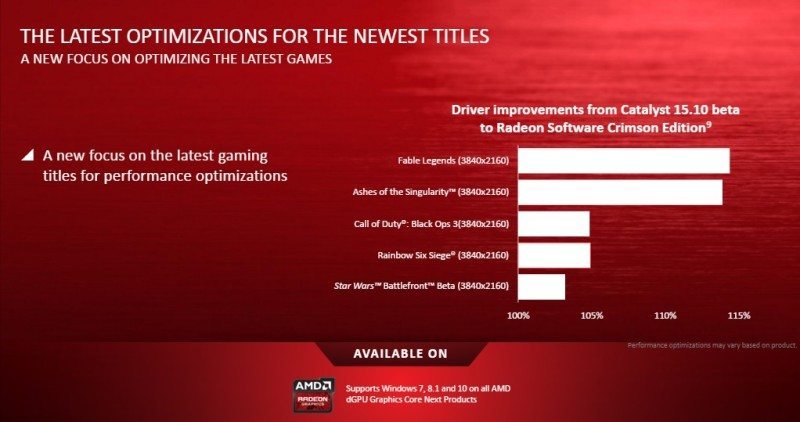
Linux gaming has boomed in recent years and is quickly becoming a regularly used standard, especially with the new Steam Machines that are based on Linux. Performance here has been noted at high as 155% compared to CCC 15.7.1.
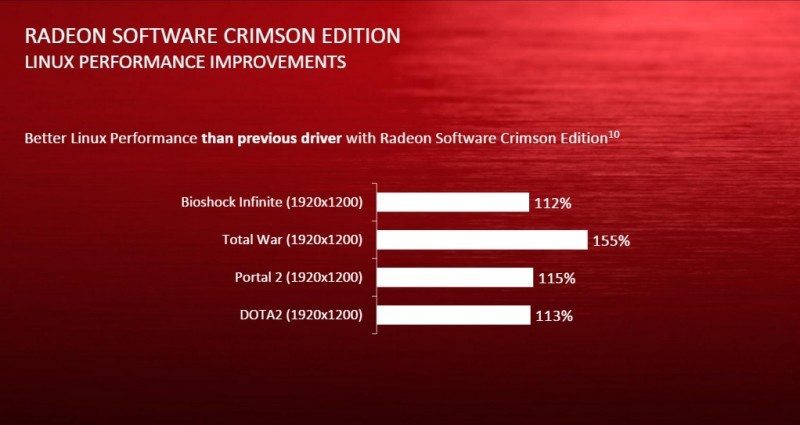
Flip Queue Size is optimised for games such as League of Legends which require ultra-fast responsiveness from your input devices. Comparing to CCC 15.7.1, the input lag has dropped from 51ms to just 17ms, which is almost negligible.
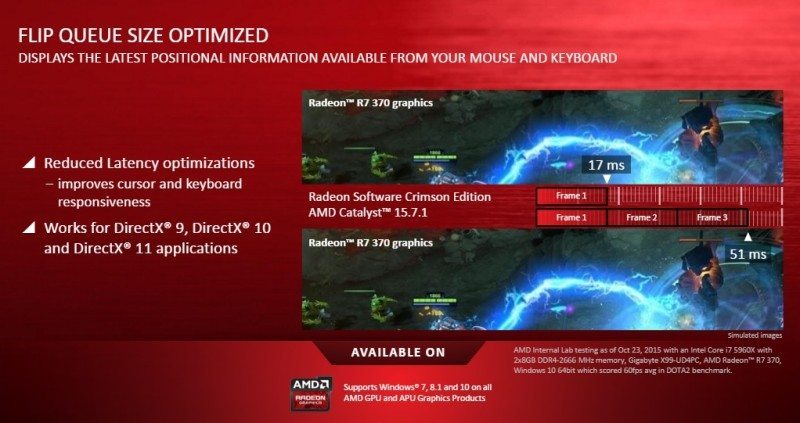
Lastly is Efficiency, something that AMD hasn’t really been known for in recent years, but the Fiji-based graphics cards have changed the way a lot of consumers think. Without doing anything other than installing Crimson Edition, you can achieve up to 21% better efficiency while watching videos; a key emphasis here was YouTube videos, but all videos are subject to this.

Frame Rate Target Control (FRTC) has been here since CCC 15.7.1 but hasn’t really been documented. This feature has been created to limit the graphics card from utilising 100% of its power in games and applications that don’t require it. In this example Rocket League was used where you can see a huge drop of 114W by limiting the FPS to 55.
